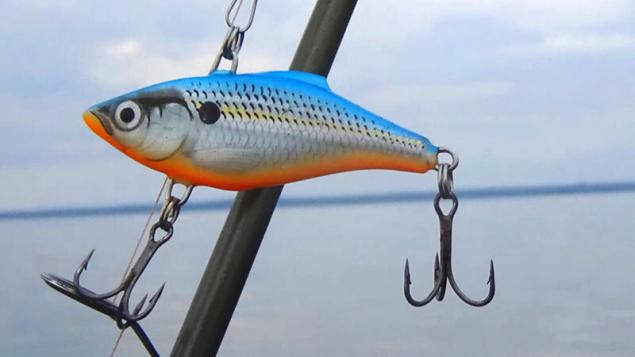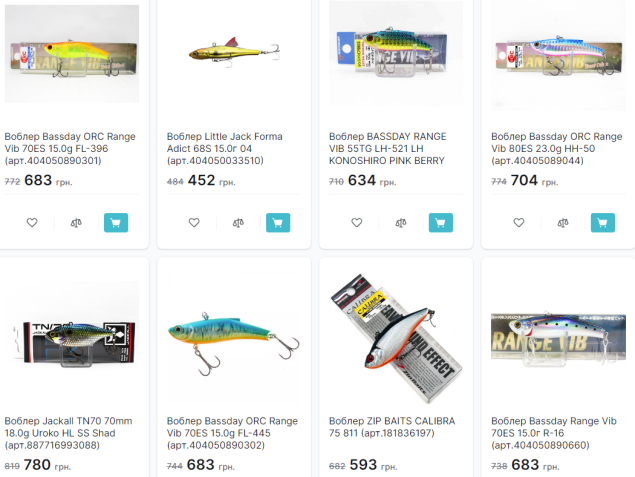443
What is rattlin

A rattlin or rattle in fishing is a small sound element, usually made of metal or plastic, that is built inside some types of fishing lures. This element makes a characteristic sound or crackling sound when the bait moves or comes into contact with water. The sound created by the rattlin can attract the attention of fish and encourage them to attack the bait.
Rattlins are often used as bait for catching predatory fish such as pike, pike perch, perch and others. This sound element can imitate the sound of prey, attracting fish, especially in low visibility or murky water. Different rattlins can create different sounds and imitate different types of prey, allowing you to tailor the bait to specific fishing conditions and fish preferences. To buy a cicada spinner, you should familiarize yourself with the available range of products.

Features and Specifications
The features and characteristics of rattlins in fishing lures can vary depending on their type and manufacturer, but in general the following aspects usually characterize this element:
- Sound Element: The rattlin is a small ball or metal disc that can move freely inside the bait. When the bait moves or comes into contact with the water, the sound element produces a sound that can be similar to cracking, metal or other sounds.
- Material: Rattlins can be made from different materials such as plastic, glass, metal or wood. Different materials create different sounds, allowing anglers to select lures with the desired characteristics.
- Shape and Size: Rattlins come in a variety of shapes and sizes. Their shape can vary from spherical to cylindrical. Sizes can also vary and this can affect the volume and tone of sound they produce.
- Color: Rattlins can be painted in different colors. This can be important, especially when fishing in different conditions and types of water, so that the bait is as noticeable as possible to the fish.
- Placement: The rattlin can be placed in different parts of the bait. For example, it can be located inside the bait's body, in the tail, or even inside the head. Different placement of the rattlin also affects the sound characteristics.
- Sound characteristics: Different rattlins create different sounds. For example, some can imitate the sound of prey, others can create more rhythmic sounds, which can be effective when catching certain types of fish.
- Water Resistant: Rattlin must be resistant to moisture and water to maintain its effectiveness and durability.
Using a rattlin in a lure can increase the chances of successfully catching a fish, especially in low visibility conditions or when fishing in murky water where the sound element can draw the fish's attention to the lure. To do this, you may need a stick mix https://fishershop.com.ua/category/stik-miks, which increases the efficiency of fishing.
Criterias of choice
When choosing a rattlin for fishing lures, there are several criteria to consider to make the right choice depending on your goals, fishing conditions and target fish:
- Type of fish: Different types of fish may prefer different sounds and frequencies. Research what types of rattlins are most effective at catching your target fish.
- Sound characteristics: Different rattlins create different sounds. Choose one that matches the type of prey characteristic of the fish you want to catch.
- Volume: The volume of sound produced by the rattlin can be an important factor. In some cases, a loud sound may attract the fish's attention, while in other situations a quieter sound will be more effective.
- Size and Shape: Select the size and shape of the rattlin depending on the size of the target fish and fishing conditions. For example, larger predatory fish may require larger rattlins.
- Material: Different materials create different sounds. For example, metal rattlins can create cleaner, sharper sounds, while plastic rattlins can imitate the sounds of small fish.
- Color: The color of the rattlin can be important in conditions of varying water visibility. Choose a color that makes the lure more visible in specific conditions.
- Location: The rattlin can be placed in different parts of the bait. Some anglers prefer tail-mounted rattlins, while others prefer body-built lures.
- Durability: Make sure the rattlin is well protected from moisture and water to maintain its effectiveness for a long time.
- Brand and Manufacturer: Some brands specialize in fishing lures and rattlins, making high quality products. Therefore, research the market and evaluate the reputation of the manufacturers.
- Experience and Preferences: Your own experience and preferences may also play a role. Try different types of rattlins and choose the one that best suits your expectations and fishing style.
Considering these criteria will help you choose the most suitable rattlin for your purposes and increase your chances of successfully catching fish.
Oleg came home every day and ate watery barley for dinner, but somehow his patience ran out.
If you’re still putting potatoes in cold water before cooking, it’s time to learn not to.























